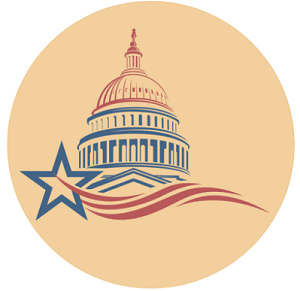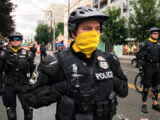
Gov. Greg Abbott says more apprehensions, drug seizures justify a border wall. Advocates say he’s misrepresenting the numbers.
July 5, 2021When Gov. Greg Abbott announced in May that his office will build a wall at the Texas-Mexico border — and again on Wednesday when he visited the border with former President Donald Trump — he said a rising number of apprehensions by Border Patrol agents and seizures of the drug fentanyl made building a state-funded border wall necessary.
In May, Abbott said that in the first four months of this year, the Texas Department of Public Safety saw a significant increase in fentanyl seizures compared with 2020. After having no fentanyl seizures in 2017, 2018 and 2019, Abbott said, DPS seized 52 grams in 2020. So far this year, troopers have already seized 137 grams, he said.
In a disaster declaration in June, the governor said, “President Biden’s open-border policies have paved the way for dangerous gangs and cartels, human traffickers, and deadly drugs like fentanyl to pour into our communities.”
But immigration and drug treatment experts say the governor and the former president have oversimplified and mischaracterized the numbers on apprehensions and fentanyl seizures.
“The idea that the border was somehow quiet before President Biden took office is completely false,” said Aaron Reichlin-Melnick, an analyst with the American Immigration Council, a Washington, D.C., group that advocates for immigrants.
Abbott’s office did not respond to a request for comment late Thursday.
Reichlin-Melnick said that apprehensions of migrants and fentanyl seizures also spiked during the Trump administration. During Trump’s administration, migrant apprehensions rose to 150,000 at the border in one month in 2019. The highest total so far under the Biden administration was last month, with 180,000 apprehensions.
He added that increased apprehensions of both migrants and drugs is a sign that the border is more secure now than 20 years ago, when there were fewer border agents and less sophisticated technology protecting the border.
“Ironically, that’s a point that someone who is pro-border wall does not like to talk about,” he said. “If you want the border to be more secure, you want the Border Patrol to apprehend more people coming across the border.”
Jessica Bolter, an associate policy analyst with the Migration Policy Institute, a nonpartisan think tank, said that currently the immigration debate centers on overall apprehension numbers and doesn’t take into account two other important measures: many migrants are apprehended repeatedly, which means that the number of apprehensions doesn’t reflect the true number of individuals attempting to cross the border.
“There is a higher level of migration activity at the border that we haven’t seen in 20 years,” she said. “But at the same time, we are also seeing an increase in repeat crossers, and the apprehension number does not account for unique individuals.”
Many recent apprehensions have been repeat crossers who were expelled from the U.S. side of the border under Title 42, which allows immigration agents to send migrants back to the Mexican side rather than arrest them.
Reichlin-Melnick said that in fiscal 2019, of unique individuals who crossed the border, 6.7% were repeat crossers. In fiscal 2020, that number went up to 26%. And in fiscal 2021, so far, 40% of apprehended migrants have crossed the border at least twice.
Bolter said building a wall will not stop illegal immigration, but will instead force migrants to attempt crossing in more remote — and often more dangerous — areas.
Biden’s softer tone on immigration — and his overturning of most of Trump’s hard-line immigration policies — may have encouraged some people to try to enter the U.S. illegally, Bolter said. But the biggest motivator is dire situations in Central America, such as gang violence, government corruption, climate change that has deteriorated crops in many areas and the pandemic’s effect on their countries’ economies, she said.
“Based on the history of border walls, what we’ve learned is that walls don’t stop illegal immigration, it just tends to be diverted to other areas,” she said.
According to the U.S. Drug Enforcement Administration’s 2020 National Drug Threat Assessment, fentanyl seizures have been increasing along the southwest border since at least the 2016 fiscal year. Between 2018 and 2019, when Trump was president, U.S. Customs and Border Protection reported a 62% increase in fentanyl seizures along the southwest border — from 745 kilograms to 1,208 kilograms.
Daniel Ciccarone, a professor of family community medicine at the University of California at San Francisco, said that fentanyl is mostly seized at ports of entry and in some cases through the U.S. Postal Service.
“So the wall is useless,” he said, adding that the U.S. “spends a lot of money trying to stop the flow of drugs” and while “it’s not a complete waste of money, it doesn’t work as well as we’d like to.”
This article was originally posted on Gov. Greg Abbott says more apprehensions, drug seizures justify a border wall. Advocates say he’s misrepresenting the numbers.


